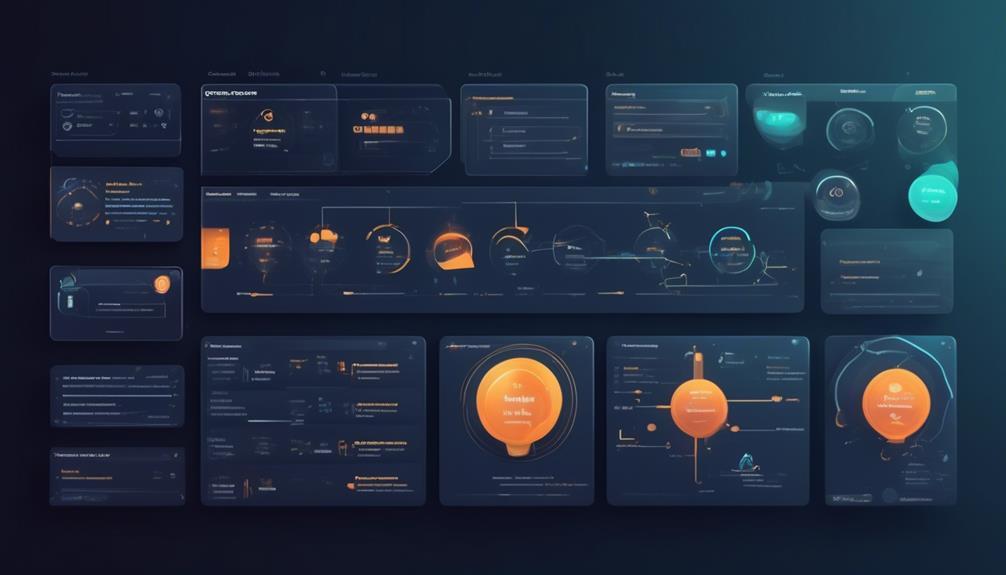In the field of software quality assurance when it comes to automated testing, two essential phases that are sometimes not fully understood are alpha and beta testing.
Many people may not realize that alpha testing is typically conducted near the end of the software development process, while beta testing is the final test before the product launch.
The distinction between these two phases and their impact on the overall quality of the software is essential for any QA team or software developer.
Understanding the nuances of alpha and beta testing can greatly enhance the effectiveness of the testing process and ultimately lead to higher quality products.
Key Takeaways
- Alpha testing is conducted by the development team in a real environment near the end of the software development process.
- Beta testing is the final test before product launch, involving real users engaging in unstructured external user acceptance testing.
- Alpha testing primarily focuses on functionality and usability, while beta testing evaluates usability, functionality, security, and reliability.
- Integrating alpha and beta testing into test automation enhances the efficiency and effectiveness of software quality assurance by providing thorough coverage and early defect identification.
Understanding Alpha Testing
We conduct alpha testing as the final stage of our software development process to ensure that the application is free of errors and ready for market launch. This crucial phase, a part of software quality assurance, involves testing the product in a real environment by the development team.
Alpha testing allows us to assess the quality of the product and address any issues before User Acceptance and public release. It encompasses various aspects such as security testing and the evaluation of the application's performance in a testing environment.
Our development team utilizes both black box and white box techniques during alpha testing to thoroughly examine the software. The goal is to identify and rectify any bugs, flaws, or usability issues that could affect the user experience.
Exploring Beta Testing

In beta testing, real users engage in unstructured external user acceptance testing to evaluate the software's performance and gather feedback. This phase of testing is crucial as it provides insights into how the application will perform in real-world settings. Beta testing is an essential part of the software development lifecycle as it helps in identifying potential issues and enhancing the overall user experience. The table below outlines the key aspects of beta testing:
| Key Aspects | Description |
|---|---|
| Testers | Real users engage in testing the software in real-world scenarios. |
| Focus | Performance, scalability, and gathering feedback from actual users. |
| Goal | To reduce product failures and enhance product quality based on user input. |
| Setting | Conducted in real-world settings, simulating how users will interact with the program. |
Beta testing plays a critical role in ensuring that the software meets the expectations of the users. By involving real users in the testing process, Quality Assurance teams can gather valuable feedback and make necessary improvements before the official product release.
Key Differences Between Alpha and Beta Testing
Transitioning from our exploration of beta testing, we now turn our attention to the key differences between alpha and beta testing in software quality assurance.
- Alpha Testing vs. Beta Testing:
- Alpha Testing is conducted by internal employees, while Beta Testing involves real users' input.
- Alpha Testing primarily focuses on functionality and usability, whereas Beta Testing evaluates usability, functionality, security, and reliability.
- Execution Cycles and Timing:
- Alpha Testing may require longer execution cycles due to its internal nature, while Beta Testing can typically be completed within a few weeks.
- Sequence and Purpose:
- Alpha Testing precedes Beta Testing and serves as the initial assessment of product quality, while Beta Testing is the final test before product launch, aiming to answer if customers like the product.
- Testing Objectives:
- Alpha Testing aims to ascertain if the product works as intended, while Beta Testing seeks to determine customer satisfaction and acceptance.
These distinctions underline the complementary roles of Alpha and Beta Testing in ensuring the quality, functionality, and user acceptance of software products.
Integration of Alpha and Beta Testing in Test Automation

Integrating alpha and beta testing into test automation processes ensures thorough coverage of functionality, usability, performance, and reliability testing. Test automation tools and frameworks can be employed to streamline the execution cycles of both alpha and beta tests, facilitating faster feedback and expedited bug resolution.
This integration aids in identifying defects early in the software development lifecycle, contributing to a higher quality software product. Furthermore, leveraging automation frameworks allows for the simulation of real user scenarios, providing valuable insights into user experience and feedback during beta testing.
The seamless integration of alpha and beta testing into test automation not only enhances the efficiency of software quality assurance but also contributes to the effectiveness of the overall testing process. It ultimately leads to a superior end product for the users, ensuring that the software application meets the required standards of functionality, usability, and performance.
This integration also plays a crucial role in the acceptance testing phase, enabling the efficient identification and fixing of bugs within the development environment.
Importance of Alpha and Beta Testing in Software Quality Assurance
What are the key benefits of incorporating alpha and beta testing into software quality assurance?
- Identifying Issues Early:
- Alpha testing allows internal employees to uncover bugs and usability issues before the product release.
- Beta testing involves real users in real environments, gathering valuable feedback to find bugs, usability difficulties, and areas for improvement before the official release.
- Ensuring Quality:
- Both alpha and beta testing contribute to the overall quality of the product.
- They ensure that the software meets the required standards and performs as expected in real-world scenarios.
- Customer Validation:
- Beta testing, involving real users, provides an opportunity for customer validation and feedback.
- This enables the team to make necessary improvements to enhance the product's usability and functionality.
- Acceptance Testing:
- Alpha and beta testing help in the acceptance testing process.
- They ensure that the software meets the specified requirements and is ready for release.
Incorporating alpha and beta testing into software quality assurance is crucial in the software development lifecycle. It helps in identifying and addressing issues early, ensuring product quality, obtaining valuable feedback from real users, and facilitating the acceptance testing process.
Frequently Asked Questions
What Is Alpha Testing and Beta Testing in Software Testing?
Alpha testing is the final stage before launch, conducted internally to verify error-free application performance. Beta testing, performed by real users, focuses on performance, scalability, and feedback to improve product quality.
Alpha testing uses black and white box techniques, near the end of development, while Beta testing is unstructured external user acceptance testing. Alpha aims to identify errors, Beta checks usability, functionality, security, and reliability in real-world settings.
What Is Beta Testing in Qa?
Beta testing in QA involves real users testing the software in a live environment to provide feedback and identify bugs or usability issues.
It's an unstructured form of User Acceptance Testing, focusing on performance and scalability.
By capturing diverse viewpoints, it simulates how users interact with the program in daily use. This helps reduce product failures, improve quality, and ensure the product meets the target audience's expectations.
It can also reduce negative reviews and build anticipation for the product launch.
What Are the 3 Types of Beta Testing?
The three types of beta testing are:
- Open beta testing: This involves releasing the software to a larger audience to gather feedback and uncover potential issues.
- Post-release beta testing: This is conducted after the official release to continue gathering feedback and addressing any unforeseen issues.
- Public beta testing: This involves releasing the software to the general public to gather a wide range of feedback in real-world scenarios.
What Is the Difference Between UAT and Beta?
The difference between UAT and beta testing lies in their focus and stage of testing.
UAT, or User Acceptance Testing, occurs near the end of the development cycle and involves end-users validating the system against their requirements.
Beta testing, on the other hand, involves releasing the product to a limited set of external users to gather feedback on real-world usage.
Both aim to ensure a high-quality product but at different stages and with distinct objectives.
Conclusion
In conclusion, alpha and beta testing play crucial roles in ensuring the quality of software products.
For example, in our recent project, alpha testing revealed a critical bug in the payment processing system. This bug would have caused potential product failures if not discovered and fixed before the beta testing phase.
By catching and addressing this issue early on, the alpha testing phase enhanced the overall user experience. This example highlights the importance of thorough testing in software quality assurance.









